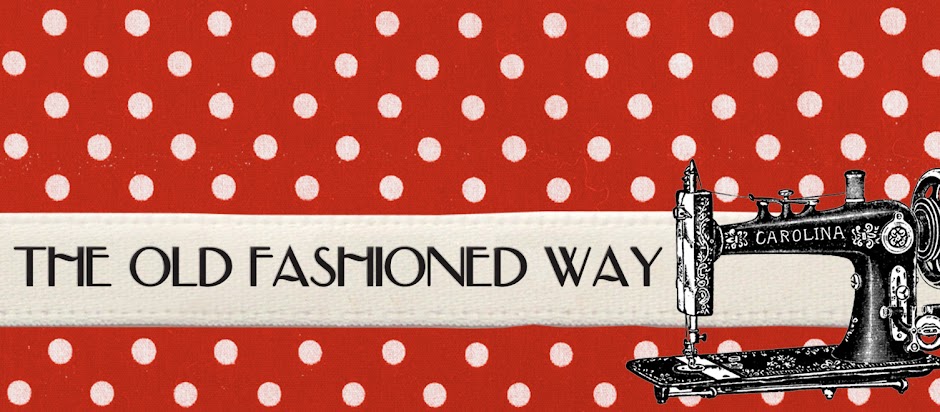Like many of you sewing lovelies out there in the ether I have just read Overdressed by Elizabeth Cline. Inspired by this I wrote a little guest blog on Now Lebanon
Here it is:
Cheap and fast fashion has changed the way most of us dress and shop.
Nowadays, trends in fashion move quickly. Necklines swoop then turn turtle, hems come in high and then make their way down to maxi lengths, all in a short space of time. In this environment, shopping on a weekly basis becomes a necessity for those intent on keeping up.
This boom in shopping has altered the way we consider clothes. Not long ago, an average of 64 new items of clothing a year (the number that Elizabeth Cline cites as today’s average in her recent book Overdressed: The Shockingly High Price of Cheap Fashion) would have seemed unthinkable, and unaffordable to most. This high number of garments is in exchange for a lower percentage of our household incomes than ever (3% as compared to 15% in 1900.) Now, less money can go much further, and so we shop without pause, leaving no time to consider where our clothes are coming from and, equally importantly, where they will go once we have stopped wearing them.
Countless high street stores have been exposed for using inhumanely cheap sweatshop labor, paying barely live-able wages for excruciatingly long hours in cramped conditions. Most of us are aware of the existence of cheap labor, yet struggle to connect its wrongs with the dresses and t-shirts and jeans that we buy. It has become increasingly difficult to disentangle finished garments from the fabrics and fingers that went into making them.
I consider myself lucky; my mum taught me the very nearly lost art of sewing when I was growing up. Making my own clothes not only brings me a lot of pleasure – being able to make clothes that fit how I want them to fit, in fabrics I choose from the shops of Bourj Hammoud – but also allows me to opt out of this consumerist cycle which is at least in part fuelled by unjust practices.
Being able to sew means that when I see a piece of ready-to-wear clothing, I can see the hours of hard work that went into it, and am therefore aware of how unrealistically low the prices are we expect to be able to pay for a throwaway dress or top. I can see how $5 for a firsthand t-shirt that would have taken even a pro-seamstress over an hour to make cannot be a fair price, even without the costs of material and shipping.
While fashion used to be much more about self-expression, now it seems that it is driven foremost by ritual consuming – socializing on a Saturday has for many become synonymous with shopping. I’m not standing in judgment on this - until I learnt to sew I too struggled to connect the clothes I saw in shops with the efforts that had gone into making them. Making clothes isn’t easy or quick. Perhaps sparing a thought for that might help us to understand the knock-on cost of our fashion habits for those behind the sewing machines.
This piece first appeared here
I also did a little interview which I completely forgot to post: here it is.
Here it is:
Cheap and fast fashion has changed the way most of us dress and shop.
Nowadays, trends in fashion move quickly. Necklines swoop then turn turtle, hems come in high and then make their way down to maxi lengths, all in a short space of time. In this environment, shopping on a weekly basis becomes a necessity for those intent on keeping up.
This boom in shopping has altered the way we consider clothes. Not long ago, an average of 64 new items of clothing a year (the number that Elizabeth Cline cites as today’s average in her recent book Overdressed: The Shockingly High Price of Cheap Fashion) would have seemed unthinkable, and unaffordable to most. This high number of garments is in exchange for a lower percentage of our household incomes than ever (3% as compared to 15% in 1900.) Now, less money can go much further, and so we shop without pause, leaving no time to consider where our clothes are coming from and, equally importantly, where they will go once we have stopped wearing them.
Countless high street stores have been exposed for using inhumanely cheap sweatshop labor, paying barely live-able wages for excruciatingly long hours in cramped conditions. Most of us are aware of the existence of cheap labor, yet struggle to connect its wrongs with the dresses and t-shirts and jeans that we buy. It has become increasingly difficult to disentangle finished garments from the fabrics and fingers that went into making them.
I consider myself lucky; my mum taught me the very nearly lost art of sewing when I was growing up. Making my own clothes not only brings me a lot of pleasure – being able to make clothes that fit how I want them to fit, in fabrics I choose from the shops of Bourj Hammoud – but also allows me to opt out of this consumerist cycle which is at least in part fuelled by unjust practices.
Being able to sew means that when I see a piece of ready-to-wear clothing, I can see the hours of hard work that went into it, and am therefore aware of how unrealistically low the prices are we expect to be able to pay for a throwaway dress or top. I can see how $5 for a firsthand t-shirt that would have taken even a pro-seamstress over an hour to make cannot be a fair price, even without the costs of material and shipping.
While fashion used to be much more about self-expression, now it seems that it is driven foremost by ritual consuming – socializing on a Saturday has for many become synonymous with shopping. I’m not standing in judgment on this - until I learnt to sew I too struggled to connect the clothes I saw in shops with the efforts that had gone into making them. Making clothes isn’t easy or quick. Perhaps sparing a thought for that might help us to understand the knock-on cost of our fashion habits for those behind the sewing machines.
This piece first appeared here
I also did a little interview which I completely forgot to post: here it is.



